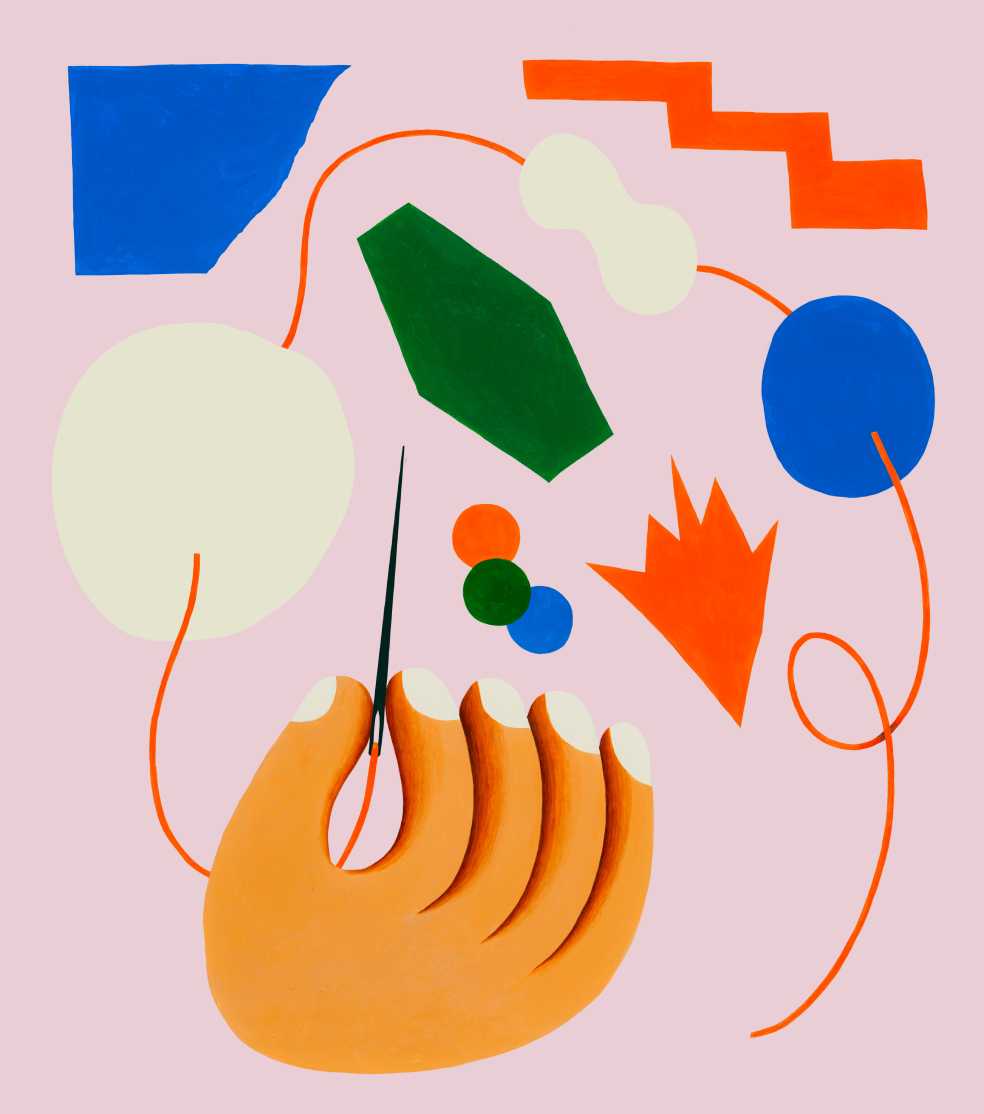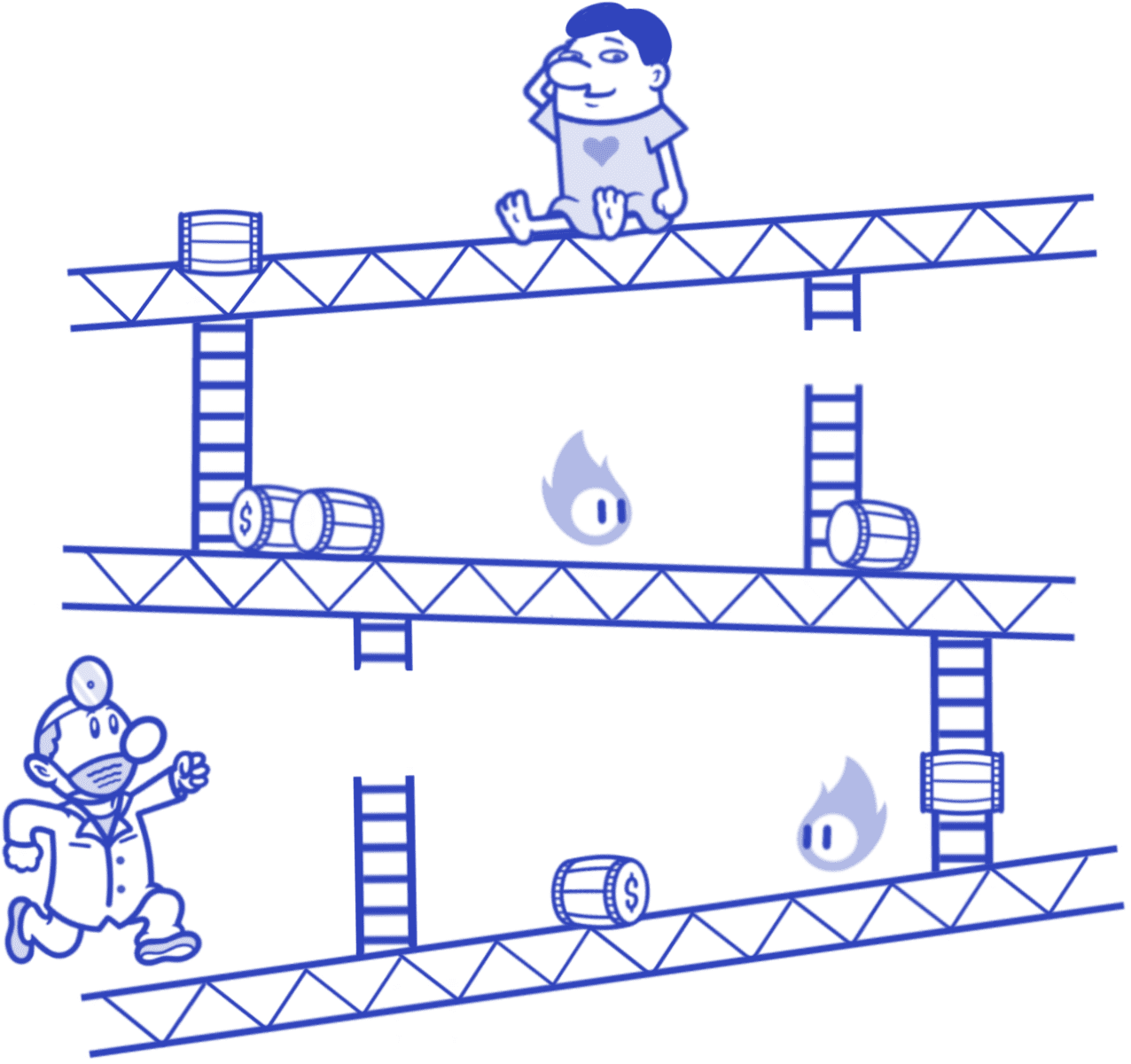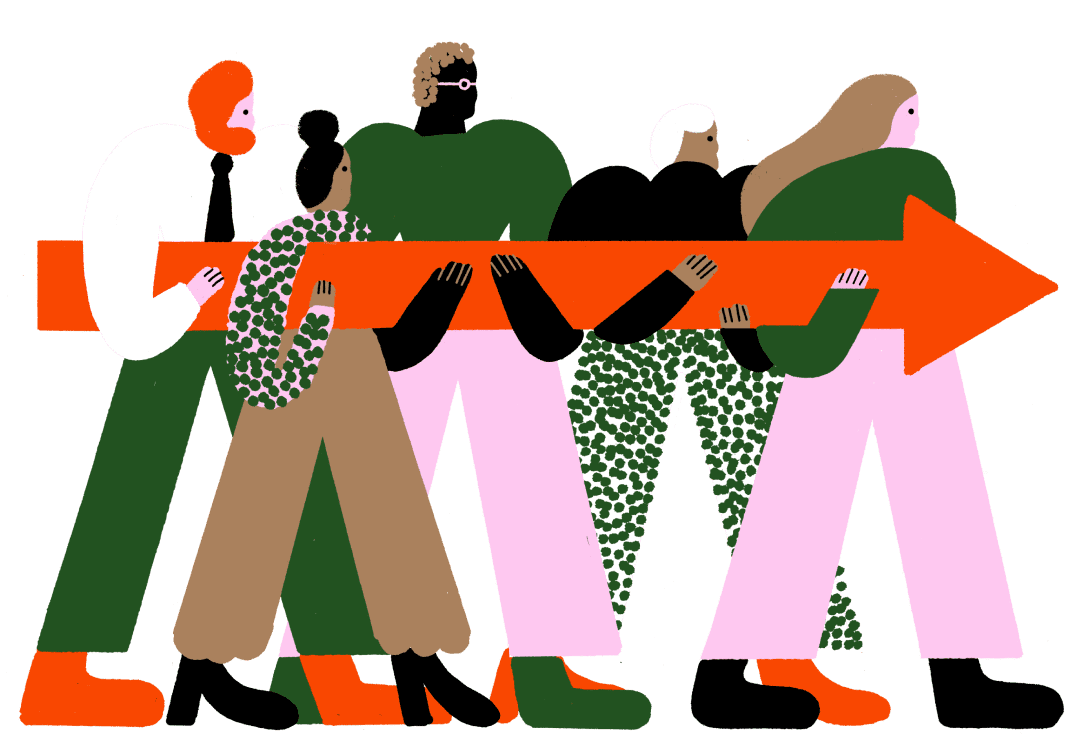We use audience insights and strategic design to create brand experience that works.
What we create
We create a behavioral understanding of our client’s audience—whether customer, employee, investor, or otherwise—using primary research and data analysis. Then we design experiences, tools and processes that respond to those insights. Our process is built to develop alignment around the work as we go, from the first conversation to the last.
What clients say
Incredible strategic sense and deep insights.
SVP Marketing, Heartflow
A rare talent for communication.
SVP Engineering, Loverly
She quickly immersed into our culture, navigating across our extremely complicated matrix. This enabled teams to easily trust her.
Senior Director of CX, Nike B2B
What we solve
We solve experience problems using a digital-first lens.
1/
“How do we get online (in a best-in-class way)?”
case study
Client Challenge
“We want to bring our B2B retail experience online, and find ways to add new value for customers while doing it. What do our customers need from us, both as a baseline and for exceptional service?”
Industry
Retail Product
Scope
Observational interviews
Customer and client workshops
Survey design
Data analysis
Product strategy
Design recommendations
Cross-company storytelling
Video production
Methodical, thoughtful and thorough. We are so grateful to have this work.
1/ A maker's mindset
The audience of focus for this project was our client’s customers—retailers of all sizes that buy and resell the client’s product. In order to uncover insights about where those customers could be better served by our client’s digital platform, we developed a mixed method research approach to map the customer’s seasonal retail process and by doing so, identify gaps and opportunities to design against. Our proposed approach included qualitative methods to help us uncover needs and motivations beyond those that were already hypothesized—followed by a broadly disseminated survey to measure the frequency with which those needs occurred across the customer base.
For our observational interviews, we assembled a team of researchers with fluency in digital product design and retail, and conducted workshops and observational interviews with customers in six countries. Our outcomes were the customer’s ‘jobs to be done’ and the motivations behind those tasks—from the transactions they wanted to complete to the ways they wanted to feel. The design-minded nature of our research team meant we could spot implications for the digital experience and lean into those topics in the interviews to define the solution criteria in the same conversation, a research opportunity that can be missed when research is conducted without a lens towards the eventual thing to be built.
from/
Standard ecommerce formatsto/
Radically new UX concepts, specific to our client’s customers.2/ Alignment as a deliverable
from/
Divided business units and rogue solutionsto/
A shared strategy across geographies and functionsThe starting assumption in the client’s organization was that their customers’ needs divided along the same lines that their business organized them by—geographic region and the type of product sold. Historically, this had made it difficult for the client’s geographic teams to agree on roadmap priorities. Our research revealed a different story—that the dimensions that played the biggest role in determining the customer’s needs were the size of the customer’s business and the amount of ‘roles per head’ for each person who worked there. Through collaborative workshops, casual conversation, and socialization of the project in the client’s organization, we were able to create a shared understanding of the customer and build buy-in on a common set of priorities.
Want to hear more about this project? Get in touch!
2/
“Who is our audience, and what do they need?”
case study
Client Challenge
“We want to create more value in our kitchen appliances by building regular customer behaviors around the new, innovative features we’ve created. How can we do this through an app? Who should the app be for?”
Industry
Retail Product
Scope
Lean market segmentation
Landscape analysis
Product strategy
Naming + visual identity
Value proposition messaging
Content guidelines
Creative direction
1/ Slicing up the market
Knowing what to build starts with a prioritized audience and crisp understanding of that audience’s needs. Our client was starting with a broad age range and economic bracket, and the single behavioral qualifier: “cooks at home”. To get to the psychological and behavioral traits that could guide product design we needed to segment their market in the way that would be most meaningful for software they wanted to build.
As a first step towards creating a segmentation, we conducted lean intercept interviews in front of cooking stores, which allowed us to build a starting hypothesis about behavioral segments. We followed this with a digital survey across several hundred participants, to understand how those segments applied broadly and what traits and behaviors existed for each. The result: roughly sized segments, each with unique cooking needs and motivations. With this data our client was able to choose it’s best-bet segment—the one that was most sizable and least satisfied by the options that already existed in the cooking app space.
from/
A market of everyoneto/
A tightly defined audience, based on behavioral traits2/ Utility + emotion = market fit
from/
A loose list of possible featuresto/
A defined and branded app, built for the audience’s specific cooking behaviors and honed to their tastesAfter identifying our audience and getting a sense of it’s needs and behaviors related to cooking at home, we moved into product ideation. Because our research helped us understand our audience’s self-identified cooking style, we were able to use it to inform the development of creative direction that would signal to users that it ‘gets them’. We applied this insight to creation of the product’s name, its visual identity and messaging, and its content guidelines.
Want to hear more about this project? Get in touch!
3/
“How do we improve our relationship with our customer?”
case study
Client Challenge
“We’re in a trust crisis. How can we use a corporate site to relaunch our brand online and improve public sentiment?”
Industry
Social Media / Advertising
Scope
Content audit
Behavioral research
Experience strategy
Information architecture
Tree testing
Content strategy
Content creation
from/
Fractured communications strategies and messages across departments and over 100 separate websitesto/
A single digital platform and one unified communications strategyto/
Alignment across communication managers in more than ten departments, down to the level of exact messagingto/
Content and content strategy poised to generate trust by declaring intent and action1/ Trustworthy marketing creates utility
Humans have two core requirements for trust: the belief that another’s intent is in the best interest of others, and the belief that the other will follow through on that intent.
Our requirements for trust in a brand are no different than these requirements for trust in an individual. When translated to our client, the lack of trust they were experiencing in the marketplace was a reflection of a general need for clarity about the client's motive and how its actions aligned with that motive.
For this project, we looked closely at the influences on brand perception for the seven audiences with whom our client wanted to shift standing, and we created a strategy using the influence that several of the audiences had on each other. Only one audience was likely to analyze communication put out directly by the company, and they were the same audience that influenced perception for other groups, so they became the primary audience we designed for.
When we combined the audience’s emotional needs for trust—clarity around intent and visibility of action that aligns with that intent—with the same audience's utility-based needs for consistent information from the brand, they pointed towards a strategy of positioning the corporate site as a social contract with the public and the primary corporate communications platform for the company.
2/ Efficacy is in the details
The success or failure of a communications strategy about transparency, clarity and honesty is in the execution of the content—word for word. Our written content had to address each topic in a way that was stripped clear of ambiguity or abstraction. It also had to represent the work of several business units and communications teams, all of which had different visions. To carry the strategy through to execution, we socialized our thinking across the organization, created content outlines for each department, and workshopped the content creation with each team. Our final content for the launched site delivered messaging that represented each team's initiatives in a trustworthy way.
Want to hear more about this project? Get in touch!
4/
“How do we increase adoption (or conversion, or retention)?”
case study
Client Challenge
“We need to increase ordering of our diagnostic technology amongst specialist physicians.”
Industry
Heath Tech
Scope
Audience definition
Goal development
Primary research + analysis
System mapping
Funnel strategy
Naming and messaging
Group facilitation
By looking at our situation from multiple perspectives,
she forged a deeper understanding among our team.
1/ Marketing goals via system design
An individual physician is rarely the sole decision maker about the use of a technology—they are impacted by payers, patients, institutions, regulations, and competing incentives. To help our client understand how to move their audience from awareness to ordering, we began by mapping their system of influence and the operational and psychological hurdles at each stage. We started by conducting surveys with both physicians and patients, then interviewed physicians in the client’s target audience, and combined this data to understand all the factors that impacted the physicians’ ordering decision. Audience segments emerged based on the stage at which the physician was blocked from ordering the client’s technology, as well as which factors influenced them most strongly—factors like patient demographics, reliability of imaging labs and number of years practicing. Mapping the system of gaps and hurdles in this way allowed us to identify a complete set of tactics that ranged from brand and marketing tactics to product features.
from/
One goal and one audienceto/
Distinct goals and audience segments for each position in the funnelfrom/
A general campaign focusto/
A plan for each point of influence in the diagnostic delivery systemWant to hear more about this project? Get in touch!
Who we are
We’re thoughtful, curious and straight-forward.
CoSign Projects is a behavior-based research and design consultancy led by Sara Green.
We are digital experts, and we partner with strategists and craftspeople across disciplines to bring system solutions to life. We ask the right questions. We clarify goals + KPIs. We communicate openly. We create a path forward.
Who we work with





